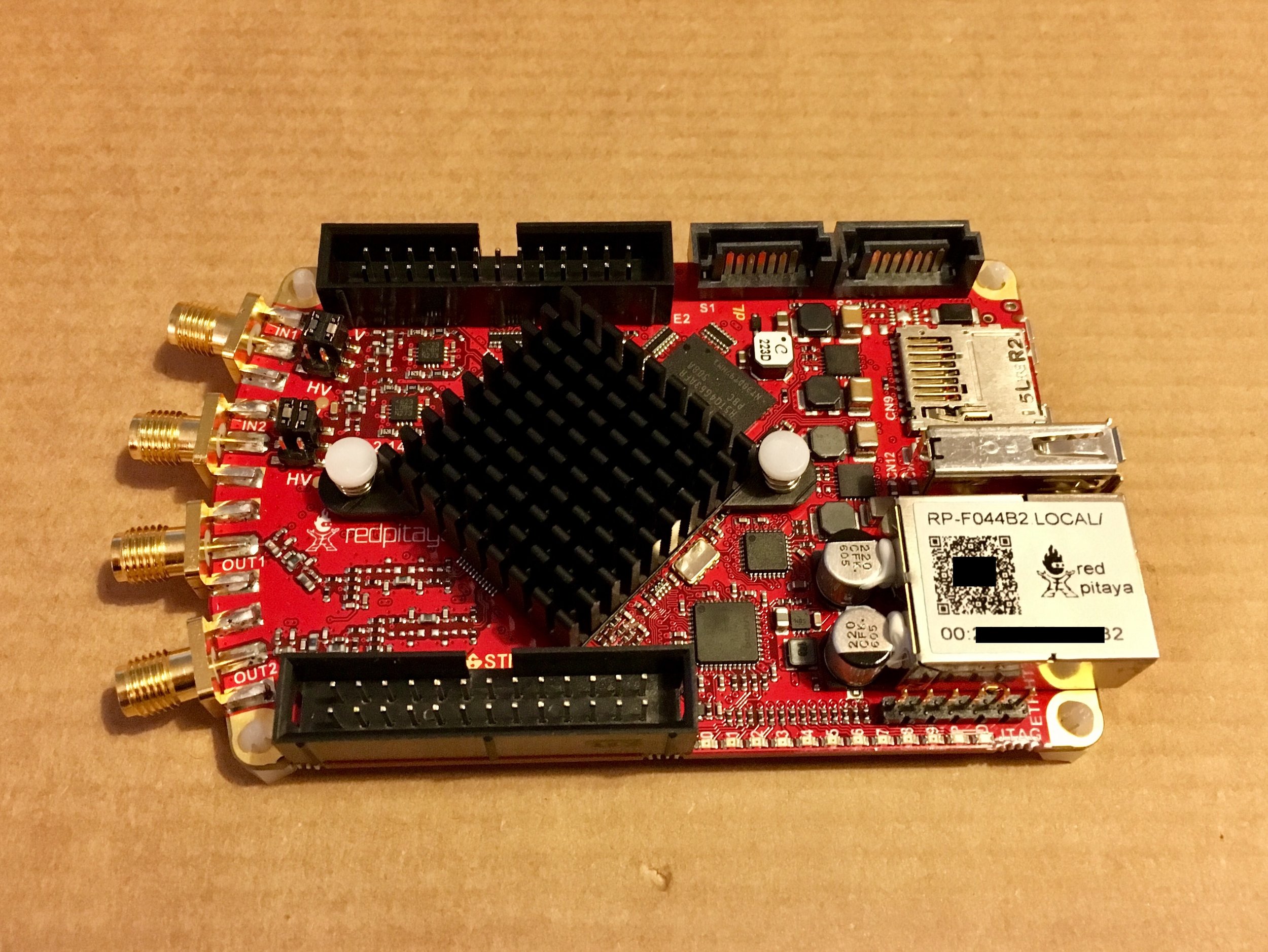Today a TNT-van unexpecededly parked outside my house.
It turned out to be the brand new STEM-14 diagnostics kit from Red Pitaya which had arrived. We didn't even know it was shipped.
Anyway, this card is thought to be the main controller for the motor drive. It features a dual ARM A9 processor with a FPGA chip and four 14 bit analog to digital converters and digital in/outputs.
The complete specs are listed at the bottom of this blogpost.
In a few days I will make another blog post and an initial review of the board and its "getting starting"-procedure.
the Red Pitaya STEM-board It is *really* tiny.
The diagnostics kit contains two measurement probes (60 Mhz), a 4 GB memory card and two adapters (SMA to BNC).
Red Pitaya STEM 125-14 specifications:
(a more comprehensive list for developers is available here)
- Processor: DUAL CORE ARM CORTEX A9 DUAL CORE ARM CORTEX A9
- FPGA: Xilinx Zynq 7010 SOC Xilinx Zynq 7010 SOC
- RAM: 512 MB (4 GB)
- System memory: MicroSD-card, up to 32 GB
- Console connection: Micro USB #1
- Power connection: Micro USB #2
- Ethernet: 1 Gbit
- USB: Version 2.0
- Syncronization: Daisy chain connector (up to 500 Mbps)
RF Inputs:
- Number of channels: 2
- Sample rate: 125 MS/s
- ADC resolution: 14 bit
- Input impedance: 10 Mohm/10pF
- Full scale voltage range: +-20 V
- Max input voltage: 30 V
- Input ESD protection: Yes
- Overload protection: Protection diodes
- Connector type: SMA
RF Outputs:
- Number of channels: 2
- Sample rate: 125 MS/s
- DAC resolution: 14 bit
- Load impedance: 50 ohm
- Voltage range: +- 1 V
- Output slew rate: 200 V/s
- Connector type: SMA
Extension connector:
- Digital IOs: 16
- Analog inputs: 4
- Analog inputs voltage range: 0 - 3.5 V
- Sample rate: 100 kS/s
- ADC/DAC Resolution: 12 bit
- Analog outputs: 4
- Analog outputs voltage range: 1 - 1.8 V
- Communication interfaces: I2C, SPI, UART
- Available voltages: +5 V, +3.3 V, -4 V
Overview of the main features of the STEMlab 125-14


